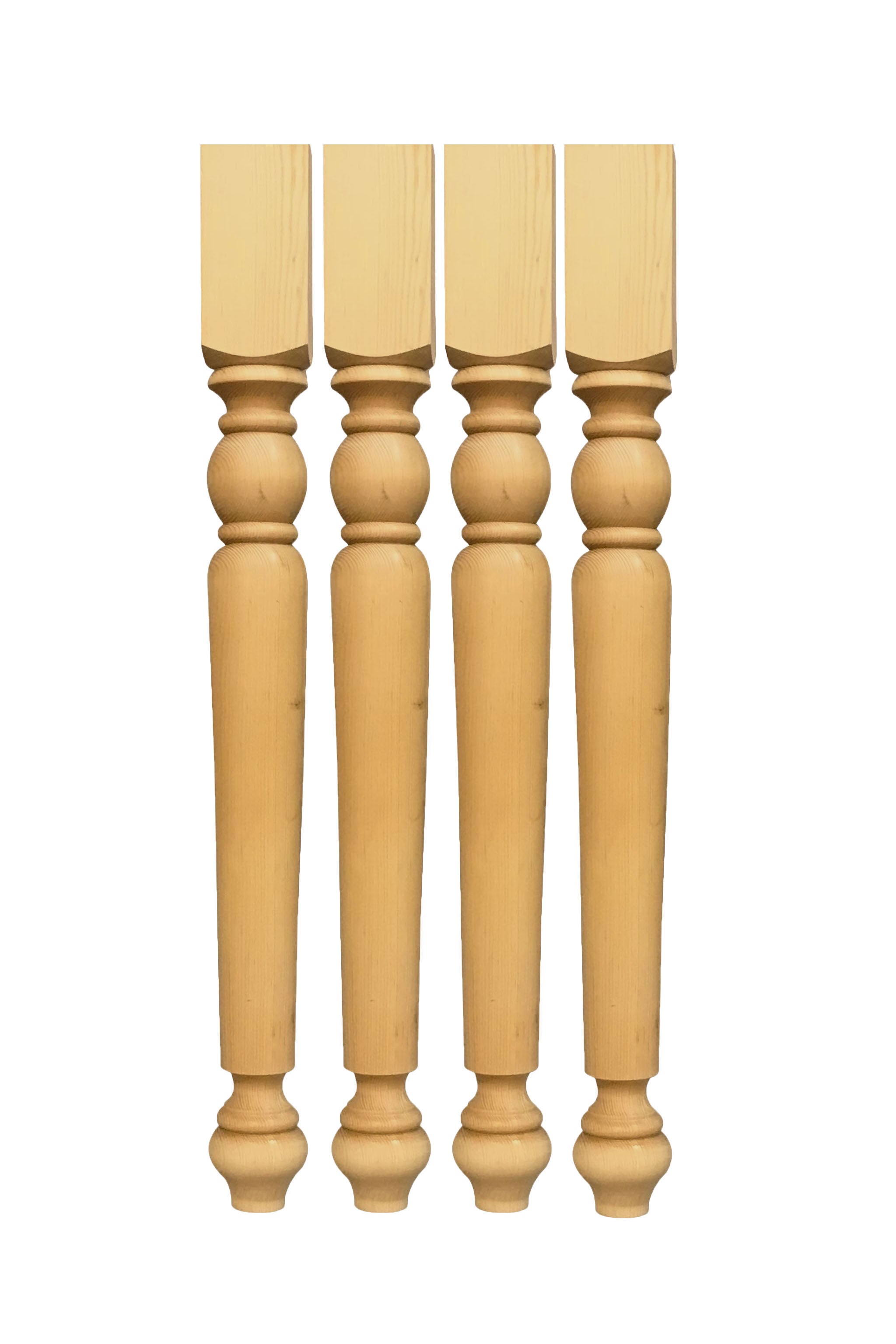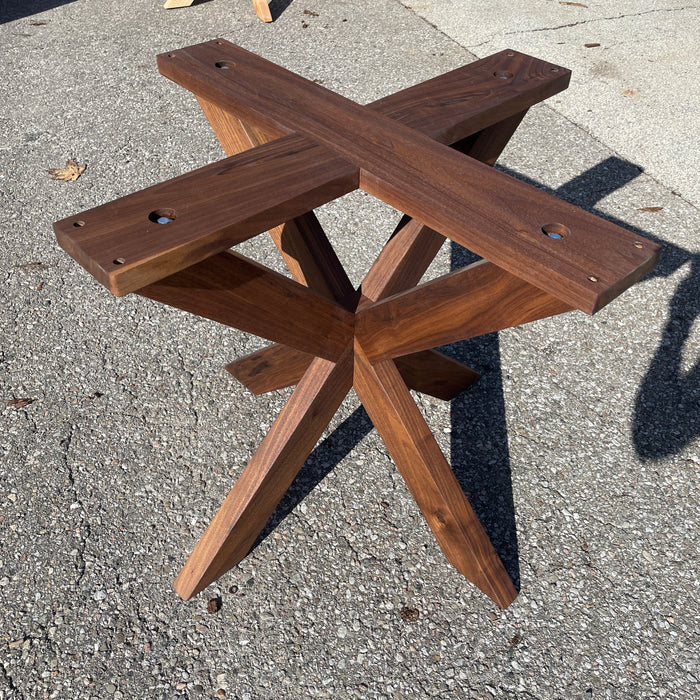Accomplish an Innovative Appearance with Costs Dining Table Legs Wood Options
Accomplish an Innovative Appearance with Costs Dining Table Legs Wood Options
Blog Article
Checking Out the Different Kinds of Table Legs Timber for Your Dining Space
The choice of eating table legs wood can exceptionally influence both the useful and aesthetic qualities of your dining room. Strong timber choices, such as oak and walnut, provide a classic look with unequaled sturdiness, while engineered wood options use cutting-edge styles that imitate the richness of all-natural grains. Furthermore, the growing fad of redeemed wood introduces a sustainable aspect that interest environmentally aware consumers. As we check out these different choices, it becomes vital to take into consideration not just the visual allure but additionally the functional ramifications of each material choice. What aspects should direct your choice?
Strong Wood Options

Unlike crafted materials, solid wood is much less susceptible to bending and damage over time when appropriately preserved. Each piece of solid timber is one-of-a-kind, showcasing private characteristics that add to the appeal and personality of the eating table.
In addition, strong wood can be finished in numerous means, ranging from natural oils to stained finishes, enabling homeowners to customize their furniture to match their style. In summary, choosing solid wood for eating table legs not only guarantees structural stability but additionally improves the aesthetic appeal of the eating area, making it a worthwhile financial investment for any home.
Engineered Wood Alternatives

Plywood, created from multiple layers of wood veneer, is particularly solid and steady, making it an exceptional selection for eating table legs. Its split make-up allows it to withstand adjustments in moisture and temperature level better than traditional solid timber. MDF, on the various other hand, uses a smooth surface area for paint or veneering, making it possible for designers to achieve a sleek appearance while keeping structural honesty.
When picking engineered wood options, it is crucial to consider the designated use and preferred visual. These materials not only enhance the functionality of dining rooms but likewise permit for higher layout versatility, ensuring that conventional and modern designs can coexist sympathetically.
Reclaimed Wood Features
Redeemed wood offers an unique mix of sustainability and personality, making it a progressively popular selection for eating table legs. Sourced from old barns, manufacturing facilities, and other frameworks, reclaimed wood symbolizes a background that new products merely can not reproduce. Each item brings its own tale, noted by distinctive blemishes, knots, and varying grain patterns, which contribute to a table's unique visual charm.
In enhancement to its aesthetic appeal, redeemed timber is an environmentally pleasant choice. By official website repurposing previously used products, it lowers the demand for brand-new lumber, thus aiding to reduce and conserve forests waste. This aligns with a growing consumer choice for lasting practices in home furnishings.
In addition, recovered wood is often a lot more resilient than newly collected wood as a result of its age. The all-natural drying procedure that redeemed timber goes through lead to a denser and more powerful material, making it less at risk to warping and splitting. This enhances the durability of eating tables, enabling them to stand up to the rigors of everyday use.
Softwood vs. Wood
When picking eating table legs, recognizing the distinctions between softwood and wood is important for achieving both aesthetic and practical goals. They generally exhibit a more rustic appearance, making them suitable for laid-back or country-style dining areas.
On the various other hand, woods, sourced from deciduous trees like maple, cherry, and oak, are renowned for their density, toughness, and resilience. The elaborate grain patterns and rich colors of woods provide a ageless and advanced charm, making them perfect for formal eating settings. While hardwoods tend to be much more pricey and larger, their durability against damage usually validates the financial investment.
Eventually, the choice in between softwood and hardwood for dining table legs ought to line up with your style vision, use needs, and budget plan, making certain that your dining area mirrors your personal design while staying practical over time.

Therapies and finishes
The aesthetic charm and long life of dining table check over here legs can be significantly boosted with numerous finishes and therapies. These processes not only protect the timber from damage however also boost its appearance, enabling it to complement varied indoor styles.
One typical therapy is staining, which permeates the wood and boosts its natural grain while adding color. Discolorations give a rich, sophisticated appearance, enabling house owners to match their furniture with existing decoration. Alternatively, clear finishes such as polyurethane or varnish produce a safety layer without altering the wood's initial shade, making sure durability versus deterioration.
Furthermore, all-natural oils, like tung or linseed oil, nurture the wood and offer a subtle sheen, all while being eco-friendly. These oils enable the surface area to breathe, avoiding dampness buildup and prospective bending.
For those seeking a rustic appeal, distressed or weathered finishes can be put on develop an aged look, adding character to the item. Eventually, the selection of therapies and surfaces depends on individual choice, preferred visual appeals, and the specific timber type, making it necessary to think about these aspects when selecting eating table legs for your space.
Conclusion
Strong timbers, crafted alternatives, and redeemed alternatives each offer unique benefits, catering to various preferences and requirements. Inevitably, the option of timber type need to align with desired style, resilience, and environmental considerations, enhancing the general eating experience.
The selection of dining table legs timber can profoundly affect both the useful and aesthetic high qualities of your dining space - Dining Table Legs Wood. Strong timber options, such as oak and walnut, provide a traditional look with unequaled resilience, while crafted wood choices use Homepage cutting-edge layouts that mimic the splendor of all-natural grains. Strong timber offers a classic quality that can raise the overall style of an eating room. Each item of strong wood is distinct, showcasing individual attributes that add to the appeal and personality of the dining table
In addition, redeemed wood is frequently a lot more resilient than newly gathered wood due to its age.
Report this page